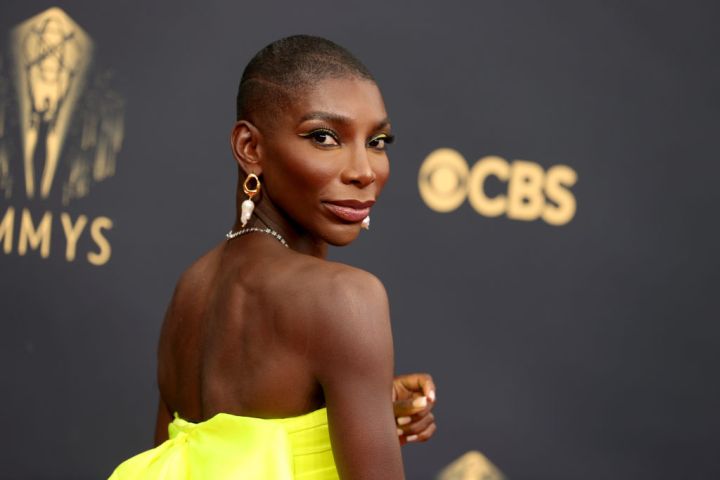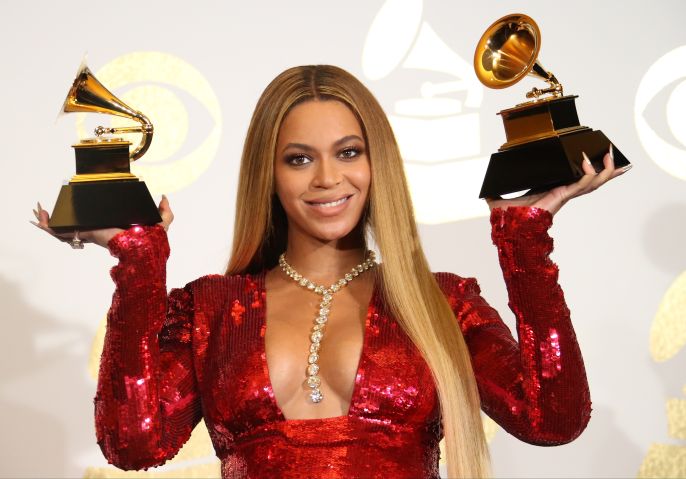Search This Blog
Friday, December 31, 2021
Thursday, December 30, 2021
Black-Owned Small Kitchen Appliances @ Target Only
 |
| Credit: CRUXGG |
1000 New Texans Arrive Every Day!
An excerpt from the NY Times -
1,000 New People Arrive in Texas Every Day. Half Are Newborns.
A surge in births in Texas comes amid a declining birthrate nationwide.
By Edgar Sandoval
 |
| All across Texas, the cry of newborn babies has become a common sound at hospital maternity wards. Credit...Matthew Busch for The New York Times |
SAN ANTONIO — Every three minutes, a child is born somewhere in Texas.
At one hospital in North Texas, 107 babies were delivered over 96 hours this summer, shattering local records. At a hospital in San Antonio, more than 1,200 babies have been born this year, up nearly 30 percent since 2018.
Across one of the nation’s fastest-growing states, an average 1,000 new Texans arrive every day. Half of them are newborns.
“Our population is going up. So just with that, I would expect our birthrates to increase,” said Shad Deering, a department chair with the Children’s Hospital of San Antonio. “We will become very busy.”
We spent a day last month with Dr. Deering and his staff and witnessed the arrival of several new residents to the Lone Star State.
~~~~~~~~~~
Between 2010 and 2020, the state’s population grew by four million — or the entire population of neighboring Oklahoma. Babies made up the largest number of new arrivals to Texas (about 48 percent), with migrants from other states (31 percent) and countries (21 percent) rounding out the rest.
And hospitals are trying to keep up.
“It has not slowed down,” said Michelle Stemley, vice president of patient care at Baylor Scott & White All Saints Medical Center in Fort Worth, which broke its four-day delivery record this summer.
The surge in births comes amid a declining birthrate nationwide. Couples have waited longer to have children, a trend that continued during the coronavirus pandemic and an uncertain economy, Mr. Potter said.
But a spike in sales of pregnancy tests — a 13 percent increase since June of last year — may signal that a so-called millennial baby boom may be on the horizon, according to Nielsen’s data and Bank of America’s research.
Many longtime Texans are contributing to the uptick in tiny new residents.
https://www.nytimes.com/2021/12/26/us/texas-newborns-birthrate.html
What Does Home Mean To You?
From the Bitter Southerner -
A Letter From Home
By President Jimmy Carter
 |
| President Jimmy Carter. Photo by Dustin Chambers |
https://bittersoutherner.com/a-letter-from-home/jimmy-carter
10 Black Women Who Made History in 2021
From mymajicdc.com -
10 Black Women Who Made History In 2021
By BreAnna Holmes
1. Michaela Coel
 Source:Getty
Source:Getty
Michaela Coel is the first Black Woman to win an Emmy for ‘Limited Series Writing’!
2. Beyoncé
 Source:Getty
Source:GettyBeyoncé Makes History As The Most Grammy Awarded Artist Ever!
https://mymajicdc.com/playlist/black-women-who-made-history-in-2021/item/2
Thursday, December 23, 2021
Designing HBCU Clothing for Urban Outfitters
An excerpt from WXii12.com -
North Carolina A&T student helps design HBCU clothing line for Urban Outfitters
By Louie Tran
 |
| Ulia Hargrove - North Carolina A & T State University |
GREENSBORO, N.C. —
A North Carolina Agricultural and Technical State University student helped design an HBCU clothing line for Urban Outfitters.
U'lia Hargrove, a native from Henderson, North Carolina, is a junior at North Carolina A&T. She's double majoring in fashion merchandising and design and supply chain management.
Hargrove finished a 10-week internship with Urban Outfitters in Philadelphia. It took place from June to August.
During her experience, Hargrove said she had the chance to work as a buying intern and in a summer class where she was able to work alongside four other HBCU students to help design an HBCU collection line.
Each intern was responsible for designing the outfits, including the colors, style, material, accessories, etc., she added.
Hargrove helped design a clothing line that represented North Carolina A&T. The collection included sweatpants, sweatshirts, tote bags, varsity jackets and playing cards.
Critical Race Theory Explained With a Cake
From CNN -
This Cake May Change Your Mind on Critical Race Theory
He Broke the NFL's Color Barrier. Have You Heard of Him?
An excerpt from Slate -
Why Isn’t Kenny Washington an American Icon?
The forgotten story of the man who broke the NFL’s color barrier—before Jackie Robinson got to Major League Baseball.
BY JOSHUA NEUMAN
 |
| Washington at UCLA, where he played in the late 1930s. Courtesy of Kirk Washington |
If you were able to go back in time and tell sports fans of the late 1930s and early 1940s that a young Black athlete would become an American icon for breaking a color barrier, they’d likely think you were talking about Kenny Washington. Few would imagine you were describing Jackie Robinson, who followed Washington at UCLA as a football and baseball player. In 1940, a Los Angeles Times sports writer worried that Washington was irreplaceable on the gridiron. “It is going to take a piece of doing,” he wrote, “for Jackie Robinson to fill his shoes.”
Today, it’s Washington who’s been engulfed by Robinson’s shadow. In the decades since Washington broke the NFL’s color barrier in 1946—the year before Robinson got to the Brooklyn Dodgers—the league has hardly acknowledged his importance, especially compared with the way Major League Baseball has burnished Robinson’s legend. A 2006 exhibition at the Pro Football Hall of Fame called “Breaking Through: The Reintegration of Pro Football” focused on the Cleveland Browns’ Marion Motley and Bill Willis—half of the sport’s “forgotten four” of pioneering Black players, along with Washington and Woody Strode (who signed with the Los Angeles Rams two months after Washington). In 1946, Motley and Willis integrated the All-America Football Conference, a newly formed league that launched without a color barrier. Washington, meanwhile, was the first of the four to integrate pro football.
This year is the 75th anniversary of Washington’s groundbreaking season, and he’s barely a footnote in the annals of sports history. During the lead-up to this past Super Bowl, a CBS segment at last acknowledged his singular breakthrough—calling it a “Jackie Robinson moment.” So why, all these decades later, don’t we talk about Jackie Robinson’s debut as a “Kenny Washington moment”? Why did America forget Kenny Washington?
Monday, December 20, 2021
A Celebrity Holiday Cookbook
Wolf Entertainment -
The “One Chicago” Holiday Cookbook
"One Chicago" Holiday Cookbook
https://wolfentertainment.com/news/special-delivery-the-one-chicago-holiday-cookbook/
Black Girls Sport Mentorship
An excerpt from the Washington Post -
Black girls are more apt to drop out of sports. This mentorship program aims to change that
By Andrew Golden
Ifeoma Onumonu was asked recently what she saw when she looked at the National Women’s Soccer League logo. Until that moment, the NJ/NY Gotham FC forward hadn’t reflected too deeply about the image or what it signified.
But Onumonu’s first thought was about what it didn’t represent: her. She said she believes the silhouette of a woman with a ponytail kicking a soccer ball depicts a White woman. And as a Black woman, she was reminded of the trophies she won growing up that looked the same as the logo — not like her.
“Trophies that I have that represent a person are White girls,” Onumonu said. “This is not me. I do not see myself in these trophies. I do not see myself in this logo, you know? When you don’t see yourself in something, you don’t know if that is something that’s achievable for you.”
Onumonu grew up not having a Black, female role model in soccer, which she said affected her career trajectory because she didn’t realize it was possible for someone who looked like her to play professionally. Now, after finishing her fifth season in the NWSL, Onumonu wants to serve as a reminder to young, Black soccer players that there is a place for them in the sport.
She became a mentor for Voice in Sport (VIS), a company that encourages advocacy for women’s sports and aims to provide mentorship to Black female athletes ages 13 to 23. Onumonu is also on the board of the Black Women’s Player Collective (BWPC), an organization formed by Black players in the NWSL to advocate for opportunities and build a community for Black women in soccer.
While some members of the BWPC have already been mentoring girls through VIS, the two organizations recently announced a formal partnership through which the BWPC will host three free mentoring sessions per month to young, Black female athletes. The goal of the program is to make an impact both on an individual level and more broadly.
“If girls see themselves in sport through this mentorship program, stay in the game and then get more confidence and develop leadership skills, I really believe they will go on to drive significant change in the industry,” said Stef Strack, the CEO and founder of VIS. “It’s going to take time to prove that out, obviously, but that’s what we’re hoping.”
https://www.washingtonpost.com/sports/2021/12/20/nwsl-players-mentor-young-black-athletes/
Saturday, December 18, 2021
Fix it, Black Girl
Fix it, Black Girl. Fix us, Black Girl. Nurse us, Black Girl. Teach us, Black Girl. Be the help, Black Girl. Clean up our messes, Black Girl. Vote for us, Black Girl. Don’t complain, Black Girl. Let us touch your hair, Black Girl.
— Hannah Drake (@HannahDrake628) October 15, 2019
He's Bringing Black Illustrations to the Medical Field
An excerpt from NBC News -
Meet the student bringing Black illustrations to the medical field
Chidiebere Ibe said he hopes his creations will help change the field of medical illustration, which is predominately white and male.
By Char Adams
 |
| Chidiebere Ibe. Courtesy Chidiebere Ibe |
Adding Color to the Nashville Stage
An excerpt from Buzzfeed News -
Jason Isbell Is Tired Of Country’s Love Affair With White Nostalgia
“I think it’s possible to acknowledge that you have benefited from a system that’s unequal without feeling shame or even guilt from it.”
By Elamin Abdelmahmoud
 | ||
| Jason Isbell during soundcheck at the Ryman Auditorium, Oct. 19, 2021 |
When you’re standing in front of the Ryman Auditorium in Nashville, you might feel under siege. It sits a few feet away from Nashville’s rowdy Broadway strip, which means you have to wade through an army of bros and bachelorettes — folks who descend upon the city for a good time, if your idea of a good time is throngs of partyers in matching outfits, open-top buses aggressively blasting music, and more country cover bands per square inch than you can possibly count.
In sharp contrast to the loud nostalgia cosplay that surrounds it, the 2,300-seat auditorium, with its imposing Victorian Gothic architecture and distinctive stained glass windows, projects dignity and history. It’s one of music’s holiest sites, a storied hall that has been dubbed the Mother Church of Country Music. Everyone from Bruce Springsteen to Willie Nelson has a reverence for it. Word is Harry Styles once planned a whole tour just so he could perform here.
In mid-October, I arrived for the second show of Jason Isbell’s eight-night residency at the auditorium. The occasion is a perfect marriage of artist and venue: Isbell is one of America’s most potent songwriters, and the Ryman is a cathedral of song. For Americana fans, the singer-songwriter’s annual residency here has become a coveted pilgrimage. It’s for good reason that Isbell has come to be associated with the Ryman: In 2015, he played four consecutive nights backed by his band, the 400 Unit. He expanded this to six in 2017. In 2018, he did another six and released a live album called Live From the Ryman. In 2019, Isbell and his band performed at the venue for seven shows. This year, they’re doing eight. Every single one of these runs has sold out.
But if the Ryman has become a kind of home for Isbell, this year’s residency carried a different energy. It was historic. For seven of the eight evenings, he had a different Black woman opening for him. In an industry and genre that is consistently failing white women and is downright hostile to Black women, the choice to feature these openers is a small revolution.
The openers vary in age, fame, and career stages. Between them, they cover a variety of genres under the roots music umbrella, ranging from country to soul, blues to folk, Americana to rock ‘n’ roll. For many of them, it was their first time playing the Ryman at all.



